Summary of the Day:
Russian forces launched significant counterattacks along the western edge of the Ukrainian salient in Kursk Oblast, reportedly seizing several settlements near Korenevo. These operations, conducted by company-sized units with experienced combat elements, appear to be part of a strategy to bisect the Ukrainian salient before initiating a larger offensive to push Ukrainian forces out of Russian territory. Simultaneously, Russian troops made advances in other areas, including southeast of Kupyansk, near Toretsk, and near Pokrovsk.
On the diplomatic front, US Secretary of State Antony Blinken and UK Foreign Secretary David Lammy visited Kyiv. While they reaffirmed support for Ukraine, they did not clarify policies regarding Ukraine’s use of Western-provided weapons against targets in Russia. In contrast, Turkish President Recep Tayyip Erdogan explicitly reiterated support for Ukraine’s sovereignty, including over Crimea. Meanwhile, China continued its efforts to promote an alternative peace plan for the conflict.
What Can I Do To Help Ukraine? This is a question I receive all the time. We at Transform Ukraine are building longer-term housing for internally displaced Ukrainians. Visit Rebuild Ukraine for how you can assist in housing a Ukrainian family displaced by the war.
Picture of the Day:
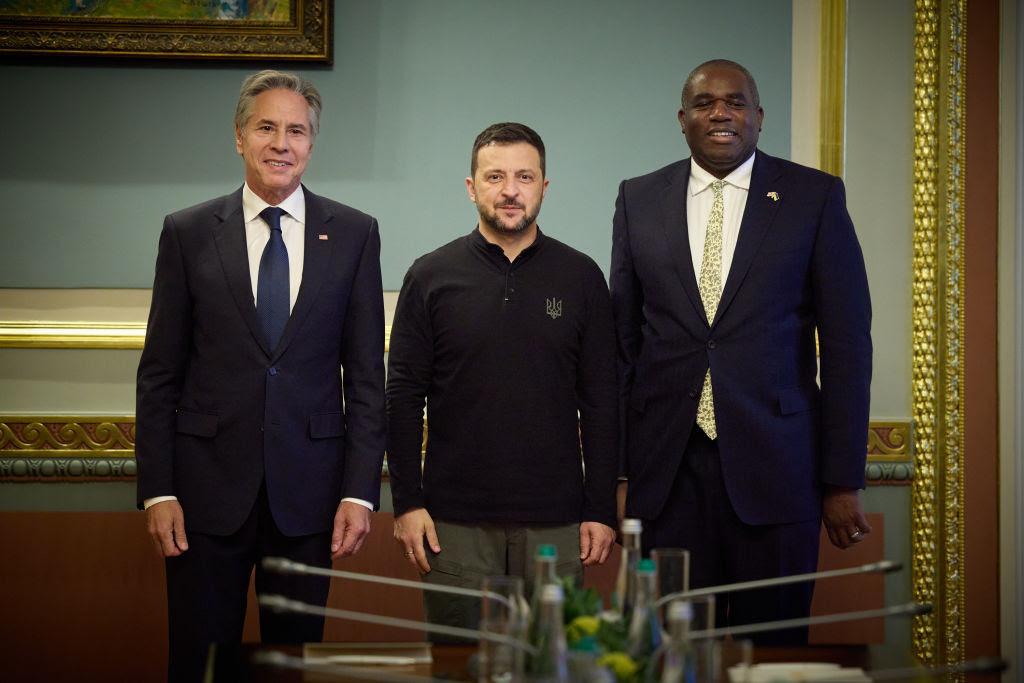 President Volodymyr Zelensky (C) holds a joint meeting with U.S. Secretary of State, Antony Blinken (L), and U.K. Foreign Secretary David Lammy (R) in Kyiv. (Ukrainian President/Handout/Anadolu via Getty Images)
President Volodymyr Zelensky (C) holds a joint meeting with U.S. Secretary of State, Antony Blinken (L), and U.K. Foreign Secretary David Lammy (R) in Kyiv. (Ukrainian President/Handout/Anadolu via Getty Images)
Beyond Ukraine – The March Towards World War
The “Okean-2024” naval exercises, a massive undertaking involving Russian and Chinese forces, are currently underway across various strategic waterways. These drills, set to conclude on September 16, showcase a display of maritime cooperation between the two powers.
Meanwhile, the Kremlin’s influence operations in former Soviet territories persist. In a recent statement, Russia’s Foreign Intelligence Service accused the U.S. State Department of planning to instigate protests to interfere with Georgia’s upcoming parliamentary elections. They also implicated an OSCE office in alleged election meddling, underscoring Russia’s ongoing efforts to discredit pro-Western politicians and hinder Georgia’s Euro-Atlantic aspirations.
The effectiveness of Russian private military contractors has come under scrutiny following a significant setback in Mali last July. Wagner mercenaries, including veterans from the Ukraine conflict, suffered heavy losses in a battle with Tuareg rebels near Tinzawaten. This defeat has raised questions about Moscow’s military influence in the region, especially in the wake of Western and U.N. troop withdrawals. The situation has further complicated diplomatic relations, with Mali severing ties with Ukraine over unsubstantiated claims of support for the rebels, following remarks by a Ukrainian military intelligence spokesperson about providing “useful information” to the rebel forces.
The Path to Peace
As the conflict in Ukraine continues to unfold, diplomatic efforts to broker peace are taking center stage. China, positioning itself as a potential mediator, is actively promoting its alternative peace plan for the war. In a significant diplomatic meeting in St. Petersburg, Chinese Foreign Minister Wang Yi and Russian Security Council Secretary Sergei Shoigu convened to discuss the ongoing crisis.
During the talks, Wang Yi reaffirmed China’s commitment to its peace initiative and expressed Beijing’s intention to rally international support for the proposal. Shoigu, representing Russian interests, voiced support for the joint China-Brazil peace plan, signaling a potential alignment of interests among these global powers.
However, the sincerity of these diplomatic overtures remains in question. While Chinese officials continue to advocate for their peace plan and Russia appears to entertain the possibility of negotiations, the reality on the ground tells a different story. The Kremlin’s actions contradict its diplomatic posturing, as it consistently rejects genuine negotiations or sets conditions that essentially demand Ukraine’s complete capitulation.
This complex interplay of diplomacy and realpolitik highlights the challenges in finding a resolution to the conflict. As China seeks to elevate its role on the global stage through peace-brokering efforts, the effectiveness of these initiatives remains to be seen in the face of Russia’s intransigence and Ukraine’s struggle for sovereignty.
Situation On The Land, Sea, and Air in Ukraine
The ongoing conflict in the Black Sea region continues to escalate as both sides report on maritime engagements. In a recent development, the Russian Defense Ministry announced that its Black Sea Fleet successfully thwarted an alleged Ukrainian attack on the “Krym-2” drilling rig. According to their statement, the incident occurred during nighttime operations when Russian forces encountered and reportedly sank eight Ukrainian speedboats.
The Russian military claims this was not a random encounter but a coordinated effort by Ukrainian naval forces and intelligence units. They assert that the operation’s objective was to seize control of the Russian-controlled platform, highlighting the strategic importance of offshore assets in the conflict.
This reported clash underscores the persistent tensions in the Black Sea, a critical arena in the broader conflict. The incident, if confirmed, demonstrates the ongoing struggle for control over maritime resources and infrastructure in the region. It also reflects the increasing complexity of naval warfare tactics, with both sides employing a mix of conventional vessels and smaller, more agile craft in their operations.
As with many reports from the conflict zone, independent verification of these claims remains challenging. Nevertheless, this event serves as a reminder of the volatile situation in the Black Sea and the potential for sudden escalations in this theater of the war.
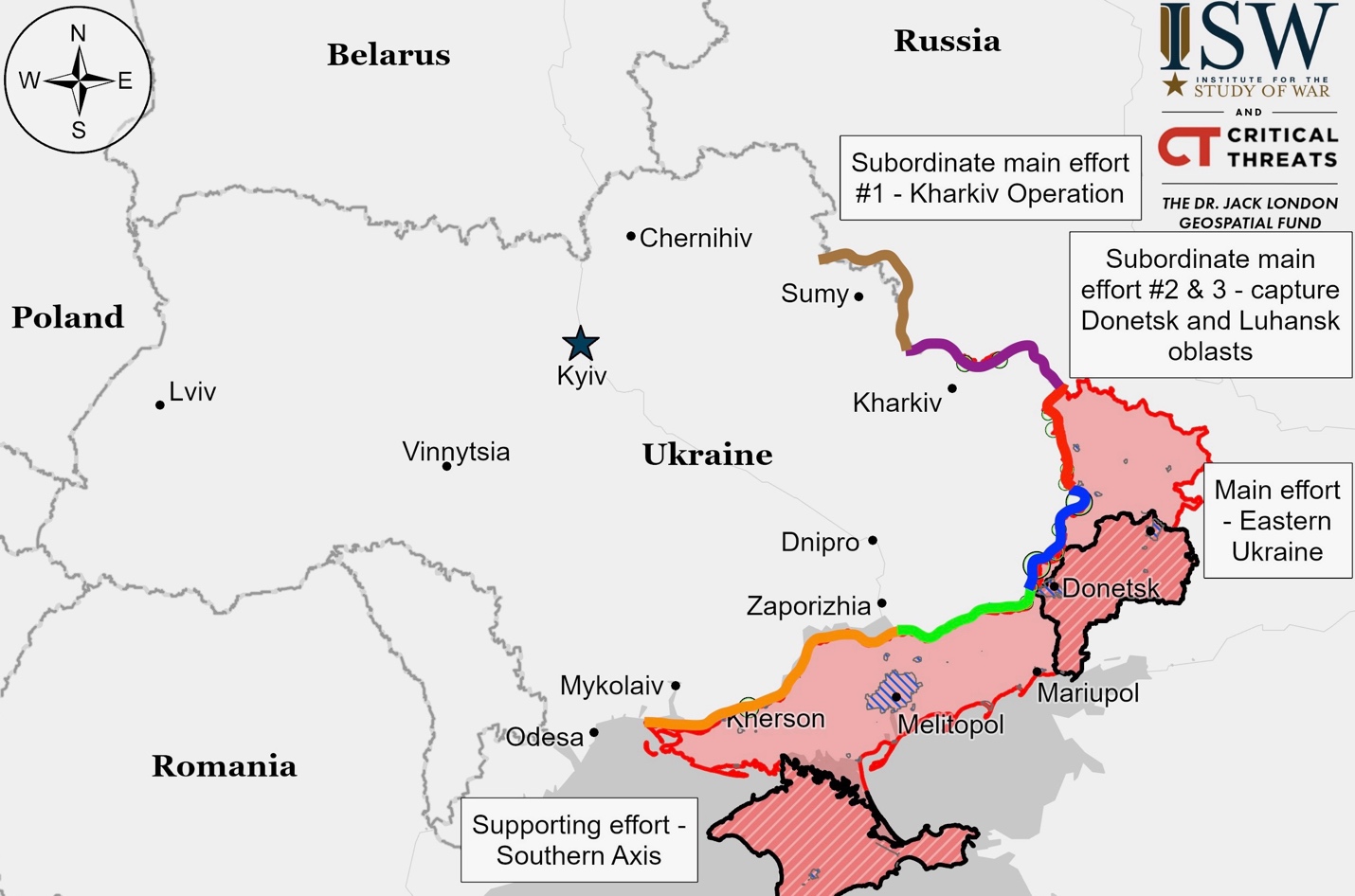
Ukrainian Operations in the Russian Federation – Initiative None
Russian forces have launched significant counterattacks along the western edge of the Ukrainian salient in Russia’s Kursk Oblast. These operations, reportedly involving experienced company-sized units, have resulted in the alleged capture of several settlements, including Snagost, Krasnooktyabrskoye, and Komarovka. Geolocated footage confirms Russian advances near Zhuravli and Snagost. The counteroffensive appears aimed at bisecting the Ukrainian salient and potentially pushing Ukrainian forces out of Russian territory.
Simultaneously, Ukrainian forces have not remained passive. They’ve launched new attacks against Russian positions west of Snagost and conducted small cross-border assaults near Medvezhye. The situation remains fluid, with both sides claiming successes and repelled attacks in various locations.
The scale of Russia’s commitment to this counteroffensive is still unclear. Some sources suggest the deployment of the 155th Marine Brigade and 51st Parachute Regiment, though these claims remain unconfirmed. The effectiveness of these operations is uncertain, given the potential degradation of the involved units from previous engagements.
Beyond the ground operations, Ukraine has expanded its drone and missile campaign against Russian territory. Attacks were reported in Murmansk, Belgorod, Kursk, and Oryol regions, with a notable incident occurring in Murmansk Oblast, located 1,500 kilometers from Ukraine. The attacks led to temporary closures of airports in Murmansk and Apatity, potentially targeting strategic military installations in the area.
As these events unfold, the long-term impact on the month-long Ukrainian incursion into Kursk Oblast remains to be seen. Both sides continue to maneuver for tactical advantages in what has become an increasingly complex and dynamic battlefield.
Kharkiv Front – Initiative Russia
Russian forces launched limited attacks in northern Kharkiv Oblast, targeting Hlyboke, Vovchansk, Hatyshche, and Tykhe. They used armored vehicles and tanks near Hlyboke, and lighter vehicles at Vovchansk. Despite these efforts, Russian forces failed to make any territorial gains in the region.
Luhansk Front – Initiative Russia
Russian forces reportedly made small advances southeast of Kupyansk, specifically around Stelmakhivka and Pishchane. Concurrently, intense fighting persisted along the Kupyansk-Svatove-Kreminna line. Notably, troops managed to cross the Zherebets River at Makiivka. Furthermore, offensive operations extended to several areas including Synkivka, Petropavlivka, Lozova, and Hlushkivka. Additional military activities were observed in and around several settlements northwest and west of Kreminna, notably Tverdokhlibove, Druzhelyubivka, and Torske.
Donetsk Front – Initiative Russia
Siversk
Russian forces have continued their attacks on settlements in the vicinity of Siversk, with clashes taking place northeast of the town near Hryhorivka, to the east near Verkhnokamyanske, and southeast towards Spirne, Vyimka, and Ivano-Darivka. Despite this ongoing fighting, there have been no confirmed changes to the positions along the frontline.
Chasiv Yar
Russian forces continued their offensive operations near Chasiv Yar, engaging directly within the locality and extending their efforts to the north near Kalynivka and to the east near Ivanivske. Despite these military activities, no confirmed changes to the frontline positions were reported.
Toretsk
In recent skirmishes near Toretsk, both Russian and Ukrainian forces have made minor territorial gains. Ukrainian troops have managed slight progress in the northeastern parts of Toretsk, while Russian forces pushed forward along Tsentralna Street to the east. Additionally, Russian military operations persisted near the localities of Dachne, Pivnichne, and Nelipivka. Despite some claims of further Russian advances in Toretsk, these remain unverified.
Pokrovsk
Russian forces achieved significant advances southeast of Pokrovsk on September 11, capturing Lysivka and Marynivka. These forces also made progress near Selydove and Novohrodivka. While there are claims of Ukrainian forces being encircled in Ukrainsk, these remain unconfirmed. Russian military operations also extended to other settlements in the east and southeast of Pokrovsk. Meanwhile, a Russian military blogger voiced concerns over the potential peaking of Russian offensives due to factors like exhaustion and limited resources.
West of Donetsk City
Russian forces launched attacks west of Donetsk City on September 11, targeting the areas around Krasnohorivka and Heorhiivka. There was a claim from a Russian source of a minor advance near Krasnohorivka; however, this has yet to be confirmed. The Russian Defense Minister Belousov acknowledged the contributions of the 5th and 110th motorized rifle brigades in the recent capture of Krasnohorivka, though no further confirmed advances in this region have been reported.
Southwest of Donetsk City
On September 11, Russian forces conducted military operations southwest of Donetsk City, specifically targeting the areas near Vuhledar, including Kostyantynivka, Vodyane, and Pavlivka. Despite these efforts, there were no confirmed territorial advances reported. Russian Defense Minister Belousov acknowledged the 57th Motorized Rifle Brigade for their role in the recent capture of Vodyane.
Zaporizhia Front – Initiative None
Zaporizhia-Donetsk Border Area
On September 11, sources from both Russia and Ukraine reported an absence of combat activities in the area along the border between Donetsk and Zaporizhia Oblasts.
Zaporizhia Line
Russian forces carried out attacks in western Zaporizhia Oblast on September 10 and 11, targeting the areas around Mali Shcherbaky and Mala Tokmachka, near Robotyne. Despite these assaults, there were no changes to the frontline’s position. Meanwhile, the troops are also engaged in building new defensive structures near Vyshneve in the Zaporizhzhia region, according to reports from the Atesh resistance movement. The Institute for the Study of War has highlighted ongoing positional battles within this area and noted unverified Russian claims of making advances in Robotyne and near Novoprokopivka. Additionally, on September 9, Russian forces executed 314 strikes on 15 different settlements in the region, which resulted in damage to buildings and infrastructure, although no casualties were reported.
Kherson (Dnipro River) Front – Initiative None
Russian forces maintained their ground offensives in the Kherson area, specifically targeting positions on the eastern bank of the Dnipro River within Kherson Oblast. Despite these continued military actions, there have been no confirmed shifts in the frontline positions.
Ukraine News
Russia launched a significant overnight attack on Ukraine, firing 34 projectiles including missiles and drones. Ukrainian forces successfully intercepted 20 drones over various regions, while five others failed to reach their targets. One strike hit an enterprise in Dnipropetrovsk Oblast’s Kamyanskyi Raion, resulting in a fire and casualties.
The attack is part of a broader pattern of aggression. Since the full-scale invasion began in February 2022, Russia has conducted over 1,000 strikes on 200 Ukrainian energy infrastructure facilities. President Zelensky reported that Russia has committed 137,000 war crimes in Ukraine during this period, including attacks on civilians, cultural sites, and medical institutions, as well as torture and deportations.
In response to these actions, the International Criminal Court (ICC) has issued arrest warrants for several Russian leaders, including President Vladimir Putin, on various war crime charges. These include intentionally harming civilians, damaging energy infrastructure, and forcibly transferring children from occupied areas of Ukraine. Ukraine’s Prosecutor General’s Office has gathered information on over 128,000 victims of these war crimes.
Innocent Victims Of War
The casualty count of civilians in the past 24 hours: (Russian War Crimes)
DEATHS: 1 INJURIES: 37
Russian forces conducted multiple attacks across Ukraine, targeting several regions. In Donetsk Oblast, Kostiantynivka faced two strikes, with the first artillery attack killing two elderly women and a second assault two hours later resulting in one more death and five injuries.
Overnight, a major drone attack hit Konotop in Sumy Oblast, injuring 14 people, including two hospitalized with one in critical condition. The strike caused significant damage to the city center, schools, and residential buildings, leading to widespread power outages and water supply disruptions.
In Chernihiv Oblast, shelling damaged a home in Khotiivka village and injured one person. Dnipropetrovsk Oblast saw a 45-year-old man wounded during shelling of Nikopol. Donetsk Oblast experienced attacks on Hnativka, Novoeconomichne, and Dobropillia, resulting in one death and three injuries.
Kherson Oblast also suffered, with 13 people injured and damage to an educational facility and civilian property. These widespread attacks have resulted in multiple civilian casualties and significant infrastructure damage across various Ukrainian regions.
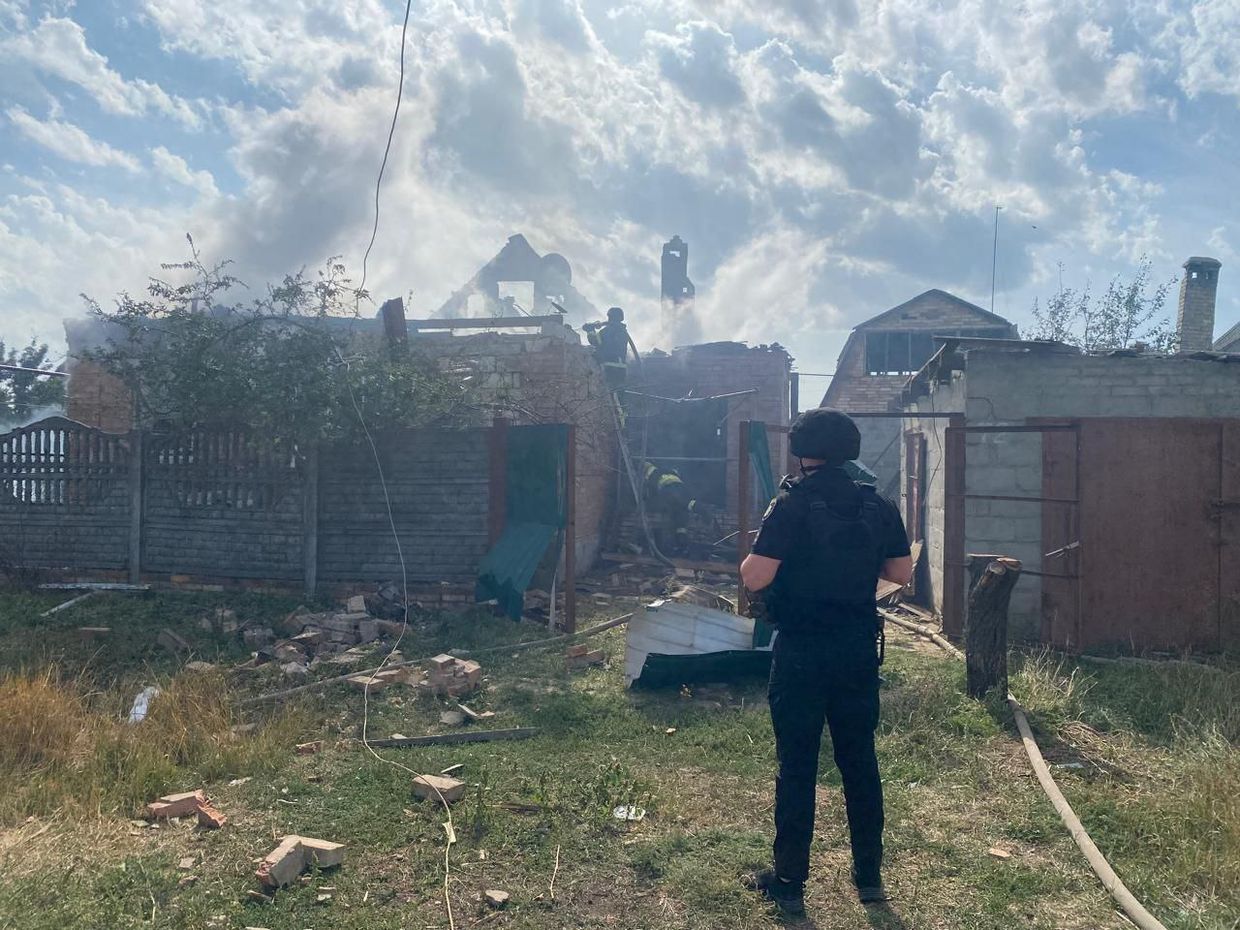 The aftermath of a Russian attack against Kostiantynivka, Donetsk Oblast, Ukraine. (Governor Vadym Filaskin/Telegram)
The aftermath of a Russian attack against Kostiantynivka, Donetsk Oblast, Ukraine. (Governor Vadym Filaskin/Telegram)
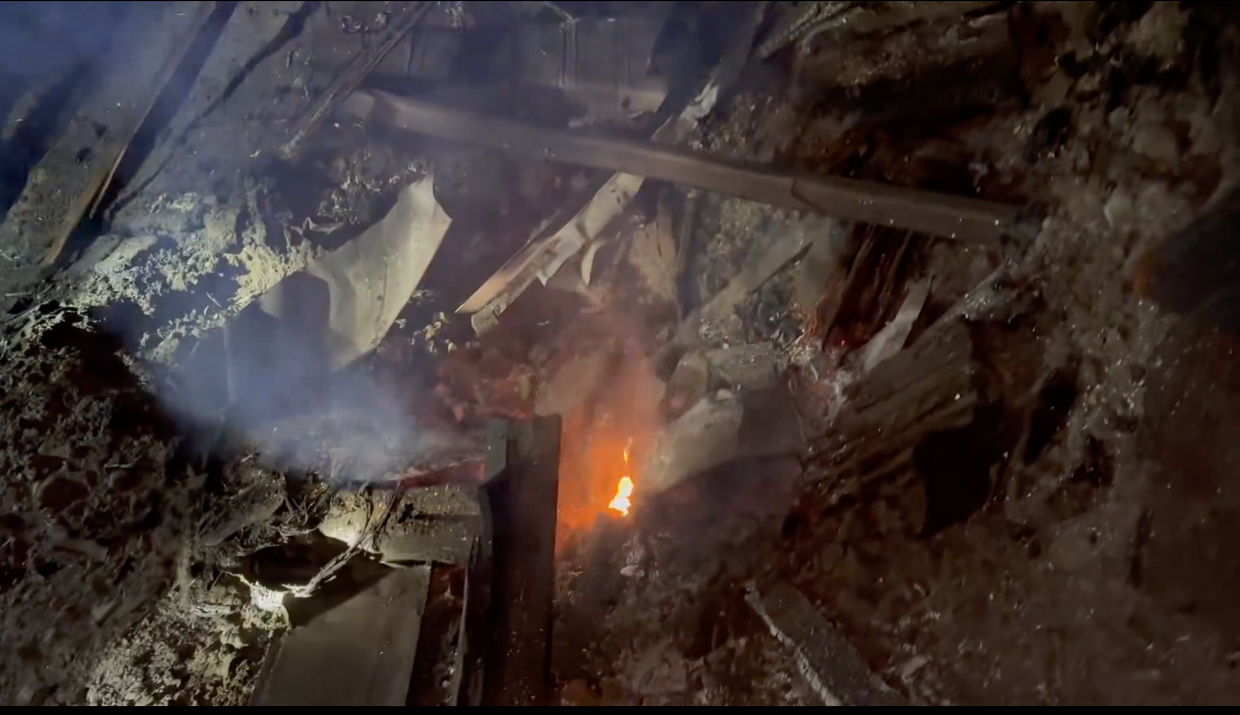 Tram tracks damaged by a Russian attack against Konotop in Sumy Oblast. (Screenshot / Artem Seminikhin / Facebook)
Tram tracks damaged by a Russian attack against Konotop in Sumy Oblast. (Screenshot / Artem Seminikhin / Facebook)
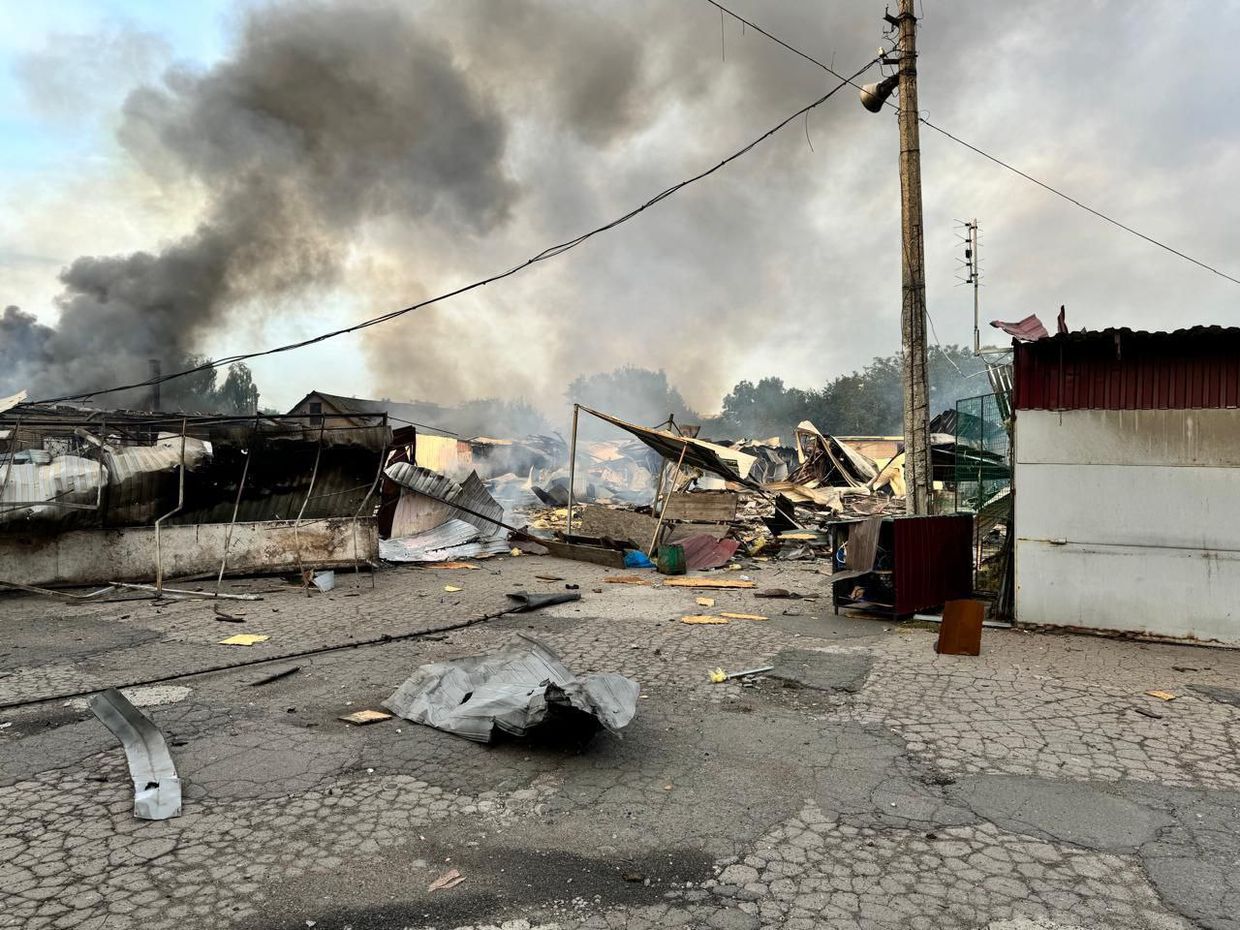 The aftermath of Russian attacks against Donetsk Oblast, Ukraine. (Governor Vadym Filashkin/Telegram)
The aftermath of Russian attacks against Donetsk Oblast, Ukraine. (Governor Vadym Filashkin/Telegram)
Ukrainian Mobilization and Defense Industrial Base
The Ukrainian Defense Ministry has approved the Black Widow drone for military use. This Ukrainian-made tactical drone is designed for single-use operations and can carry a substantial explosive payload. It operates as a first-person-view (FPV) attack drone, allowing for precise targeting.
This approval aligns with Ukraine’s ambitious plan to manufacture at least one million drones in 2024. The move reflects the growing importance of drone technology in the ongoing conflict, with both Ukraine and Russia heavily investing in this area.
Ukraine has been utilizing drones to conduct strikes on Russian targets in occupied territories and behind enemy lines. The country’s recent innovations in drone technology include the development of “dragon drones,” which are reportedly equipped with thermite munitions. These advancements underscore Ukraine’s commitment to enhancing its capabilities in unmanned aerial warfare.
Ukraine’s Allies
Kyiv becomes the focal point of international diplomacy as high-ranking officials converge for the fourth Crimean Platform summit. U.S. Secretary of State Antony Blinken and U.K. Foreign Secretary David Lammy lead the charge, joined by leaders from Lithuania, Latvia, and the Czech Republic. Their presence underscores global support for Ukraine’s sovereignty and territorial integrity.
During their visit, Blinken and Lammy announce substantial aid packages totaling over $1.4 billion, aimed at bolstering Ukraine’s energy infrastructure, supporting displaced citizens, and funding demining efforts. Latvia also pledges additional military support, including armored personnel carriers and drones.
The summit brings to the forefront ongoing discussions about Ukraine’s use of Western-provided weapons for strikes within Russia. While the U.K. reportedly allows the use of Storm Shadow missiles for such purposes, U.S. policy on ATACMS missiles remains unchanged. This debate unfolds against a backdrop of Western officials privately urging Ukraine to set more realistic goals for the conflict’s next phase.
In response to Iran’s support for Russia, the U.K. imposes new sanctions on Iranian individuals and halts Iran Air flights. The EU upholds sanctions against Russian oligarchs and entities, though lifts restrictions on Yevgeny Prigozhin’s mother. Additionally, the U.K. targets a “shadow fleet” of Russian oil tankers in an attempt to disrupt Russia’s war funding.
The conflict takes center stage in U.S. politics during a presidential debate between Donald Trump and Kamala Harris. Their contrasting approaches to the war draw mixed reactions from Ukrainian experts and Russian state TV commentators alike, highlighting the potential impact of the upcoming U.S. election on Ukraine’s future.
In the cultural sphere, controversy brews as the Toronto International Film Festival proceeds with the premiere of “Russians at War,” a Canadian-funded documentary criticized for its portrayal of Russian soldiers in Ukraine without mentioning war crimes.
As these events unfold, the EU announces plans to phase out Russian gas by 2024, seeking alternative suppliers like Azerbaijan to reduce dependency on Russian energy resources. Turkish President Recep Tayyip Erdogan also reaffirms his support for Ukraine, emphasizing the need for Crimea’s return under international law.
Life in Russian-Occupied Ukraine
Russian authorities held illegal regional elections in occupied Crimea from September 6-8, likely fabricating increased voter turnout to claim local support for the occupation. Crimea occupation head Sergei Aksyonov called the election “maximally open and democratic,” while Sevastopol governor Mikhail Razvozhaev claimed 54% turnout, double that of 2019. Ukrainian officials argue these figures are falsified to create a false impression of growing support. They note that most voters in Sevastopol are Russian citizens tied to the occupation. The elections violate international law and have been condemned by Ukraine and the international community.
Russia News
In Russia’s Belgorod Oblast, a freight train derailed in the Novooskolsky district following an explosion on the tracks, affecting a diesel locomotive and 11 empty cars. Governor Vyacheslav Gladkov described the event as “illegal interference” and authorities have classified it as a “terrorist attack,” prompting the opening of a criminal investigation. Fortunately, there were no reported casualties. This derailment adds to a series of similar sabotage incidents on Russian railways, which have occurred during the ongoing conflict with Ukraine. While Ukraine’s military intelligence has indicated such actions are aimed at disrupting Russian military logistics and carried out by opponents of Putin’s regime, there was no direct claim of involvement in this specific incident.
Russian Mobilization and Defense Industrial Base
Ukrainian military spokesperson Colonel Vitaly Sarantsev has highlighted that Russia is actively replenishing its military reserves, with an emphasis on comprehensive training for new recruits. It is estimated that Russia had amassed up to 60,000 reserve troops from October 2023 through June 2024. These reserves are primarily intended to bolster frontline units and might be reserved for a potential offensive on Pokrovsk.
Meanwhile, Russia is grappling with potential manpower shortages, exacerbated by Ukraine’s recent incursion into Russia’s Kursk Oblast in August. While there is speculation about a possible new mobilization of conscripts, many analysts deem it unlikely in the near term. The Kremlin appears reluctant to announce another mobilization, concerned about potential social unrest and economic repercussions. Instead, efforts have been made to increase compensation for volunteer fighters and potentially deploy young conscripts in sensitive border regions like Kursk.
President Putin maintains that the situation on the front lines is stable, suggesting that immediate mobilization may not be necessary. However, the sentiment among potential conscripts is wary, with some expressing reluctance to fight and considering leaving Russia should mobilization proceed. The future of Russia’s military strategy, including the possibility of further mobilization, remains a topic of debate among experts.
Russia’s Allies
As tensions escalate in the ongoing conflict, U.S. officials report that Iran has supplied Russia with Fath-360 ballistic missiles for potential use in Ukraine. These missiles, boasting a 120-kilometer range and larger warheads, present a formidable challenge to Ukraine’s already strained air defenses.
President Volodymyr Zelensky, addressing the Crimean Platform in Kyiv, acknowledges receiving Western intelligence about the deliveries but emphasizes the need for concrete evidence before confirming their deployment. The U.S., along with its allies, has responded swiftly, imposing new sanctions on Iran and warning of severe consequences.
Iran denies providing the missiles, while Russia offers an evasive response. Ukraine’s Foreign Ministry hints at potential diplomatic repercussions, including the possible severance of ties with Iran, if the missile supply is confirmed.
Meanwhile, Belarus’s leader Alexander Lukashenko has bolstered military presence along Ukraine’s northern border following a Ukrainian incursion into Russia’s Kursk Oblast. While experts view this as largely posturing, it underscores Belarus’s complex position in the conflict. Lukashenko continues to support Russia’s war effort through military-industrial cooperation while attempting to avoid direct involvement and improve relations with the West.
As the situation remains tense, both Ukraine and Belarus closely monitor each other’s movements along their shared border, adding another layer of complexity to the already volatile regional dynamics.
Source Material
Institute for the Study of War – understandingwar.org
The Kyiv Independent – kyivindependent.com
Kyiv Post – kyivpost.com
